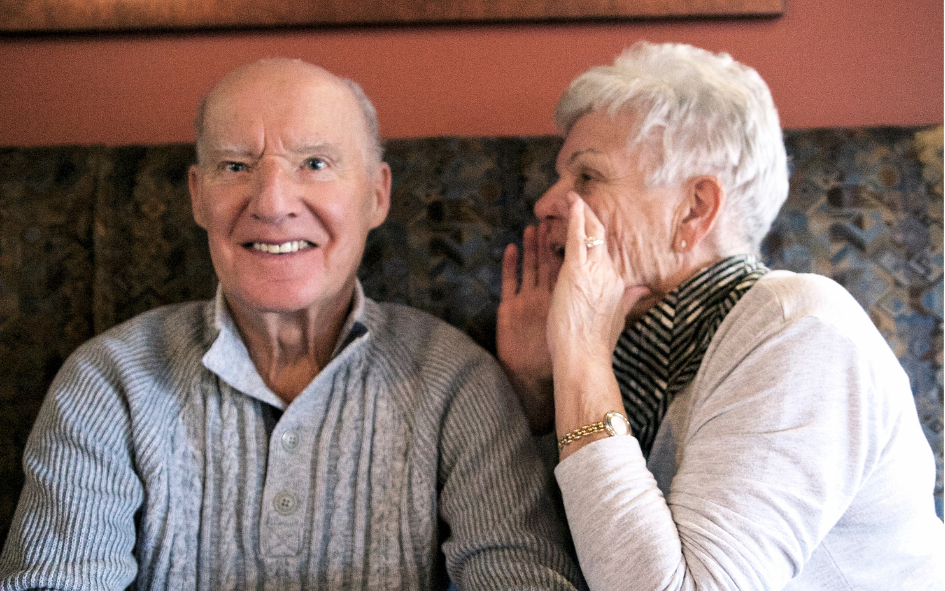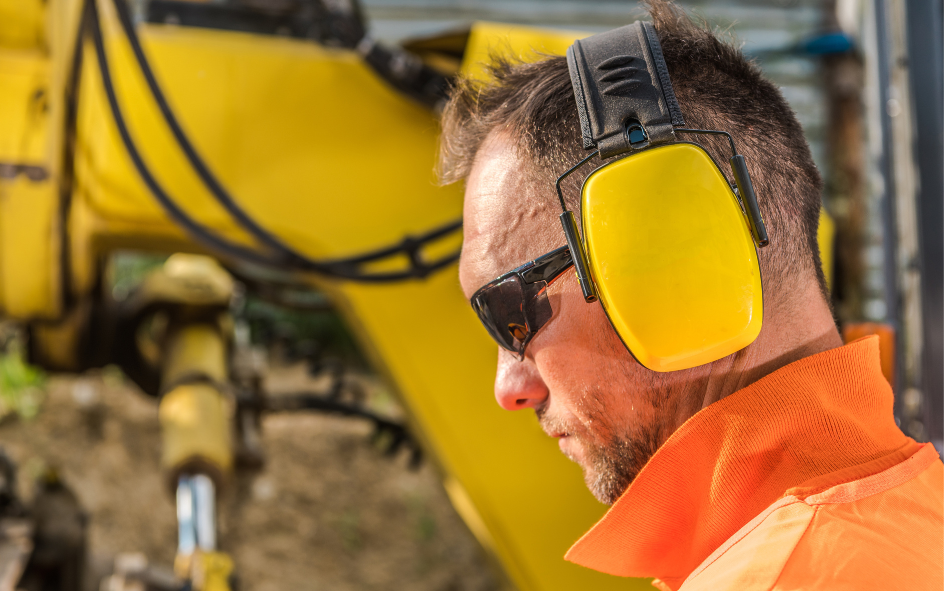Why is Ear Protection Important?
.png?width=945&name=hearing%20protection%20(1).png)
Source of image: canva.com
Many wonder about the value of ear protection and whether they truly need it. The answer is YES! Ear protection helps to protect your hearing from damage by shielding your ears from potentially harmful noise around you. Prolonged exposure to loud noises can result in substantial long-term damage that only gets worse over time; thus safeguarding your ears is a crucial part of protecting your hearing from those damaging noises.
The Human Ear - A Magnificent Organ
.png?width=2000&name=Human%20ear_hearing%20protection%20(2).png)
Source of image: canva.com
Your ear is a remarkable organ of the body. It helps you to hear the world around you. It assists with sound interpretation, balance, and even self-cleaning. Human ear is an organ of hearing and equilibrium that analyses and detects sound via transduction (converting the sound waves into electrochemical impulses) and keeps the body balanced (equilibrium).
The Importance of Hearing Protection

Source of image: canva.com
Did you know that hearing loss is far more common than you might think? According to Rasasoran et al. (2021), almost 90% of the reported occupational diseases in Sabah, Malaysian Borneo were due to hearing loss. That’s a scary statistic, isn’t it? Noise-induced hearing loss (NIHL) is one of the most common occupational injuries among workers in manufacturing industries in Asia (Chen et al., 2019). By referring to the statistics report from the Malaysia Department of Occupational Safety and Health in 2016, 21.9% of employees in Malaysia were reported to suffer from hearing impairment. What’s sad about this is that many hearing issues are entirely preventable if people opted to protect their ears. Still not convinced with the need for ear protection? Here's why Ear Protection is necessary:
- Hearing is fragile
Hearing is fragile, our inner ear is an amazing system yet also an extremely fragile one. The human hearing system decline in performance as we get older; this is a natural phenomenon that’s to be expected. Anyhow, if your hearing system got damaged in your younger years, you might struggle to hear in your old age.
- Tinnitus can drive you mad
Tinnitus is a common hearing problem in which you constantly hear a buzzing or ringing in your ears. Imagine hearing your fire alarm go off in the background for weeks or months at a time; this should give you an idea of what tinnitus is like. Tinnitus is usually caused by prolonged exposure to overly loud noises, such as drilling, explosions, or extremely loud music.
However, if you choose to wear ear protection while being exposed to these types of unavoidable sounds, you can very likely reduce your chances of developing tinnitus significantly. As stated by the U.S. National Center for Environmental Health, loud noise is particularly harmful to the inner ear (cochlea). A one-time exposure to extremely loud sounds or listening to loud sounds for a long time can cause hearing loss.
- Damaged hearing is irreversible
Our eardrums and ears do not heal on their own, so if you damage your hearing by not wearing adequate ear protection, there is no turning back. Once your hearing has been damaged, it can’t be fixed. You can, of course, have a hearing aid fitted, but even a hearing aid cannot guarantee that your hearing will be restored to its former glory. Therefore, make sure that you wear earmuffs that offer the perfect level of hearing protection by blocking out loud sounds whenever you are exposed to loud noises.
It’s just like you wouldn't drive your car if you weren't wearing a seat belt, would you? Why? Because you are aware that if you are involved in an accident, your seat belt will save your life. It's the same as wearing earmuffs to protect your hearing; if you want to keep this priceless sense safe, you must take the initiatives to protect it.
Causes of Hearing Loss

Source of image: canva.com
For many years, researchers and audiologists have been working to identify the reasons for hearing loss. Even though ageing is the biggest culprit, hearing loss is frequently brought on by noise exposure. The hearing loss increased in frequency with the industrial revolution, but it wasn't until the latter half of the 20th century that the puzzle pieces started to come together so that we could fully comprehend how occupational noise affects hearing loss.
After realising this, many workplaces, industries, and governments all over the world have incorporated new workplace mandates regarding hearing protection requirements to assist workers to protect their ears from exposure to loud noises, especially prolonged exposure. These actions have played a crucial role in safeguarding hearing at work and in raising awareness of the importance of hearing protection even outside of the workplace.
Protecting your ears: Hearing Protection In The Workplace

Source of image: canva.com
When does a work-related exposure cause hearing loss or hearing impairment? After all, we live in a world where loud noises are common, such as those noises from heavy city traffic or the music shared through the open windows of the car stopped next to you. There are also people who think headphones are speakers and play music loud enough that everyone passing by can hear it. So, yes, loud noise is common; and it can cause hearing damage or hearing loss.
It is undeniable that the equipment we use in our working professions might produces loud noise, but this does not necessarily mean that workers will lose their hearing from that. With the proper workplace hearing protection controls, the chances for the employees to experience occupational hearing loss can be greatly reduced by protecting them against potentially damaging loud noise exposures.
Besides, hearing protection at home is just as important as hearing protection at worksite. Mowing the lawn or refinishing your deck can have an impact on one's hearing. These household tasks may not take much time; however, they can cause damage that was previously not present over time. It is also important to remember to wear ear protection while at concerts or even sporting events. Any kind of noise exposure can be harmful to one's hearing over time. This is why hearing protection is essential for people of all ages. We must protect what we have because once it is gone, it is gone forever.
Understanding Hearing Damage: Noise Levels In The Workplace

Source of image: Centers for Disease Control and Prevention (CDC)
How loud does the noise need to be to damage one’s hearing? Hearing loss can happen after 8 hours of exposure to 85 decibels of noise. Let's put this in context. Normal conversations typically take place at 60 decibels, which is well below the hearing loss threshold. Remember the headphones that were used as speakers? That music was most likely being played at maximum volume, which can often register as 105 decibels. But here's the thing, every 3 decibels increase past 85 decibels, and hearing loss can occur in half the amount of time. So Hearing loss can occur after only 4 hours of exposure to 88 decibels and 2 hours of exposure to 91 decibels. Once the noise levels exceed 100 decibels, a person can suffer hearing damage in as little as 15 minutes. The louder the noise, the faster hearing loss occurs.
Where do the tools and environments where we work fit into this picture?
Air compressors from 3 feet away register 92 decibels, which would take less than 2 hours to cause hearing loss; powered drills register 98 decibels, which would cause damage after 30 minutes; typical factories often register at 100 decibels – that’s 15 minutes of exposure; powered saws can reach 110 decibels from 3 feet away, which could cause permanent hearing loss in under 2 minutes.
Succinctly, if workers are exposed to these noise levels without proper hearing protection, then hearing loss is very likely to happen. The only way to know the exact noise levels that workers are exposed to is to conduct noise monitoring using specialized equipment, though this is only required when exposures are at or above 85 decibels. Some indications that noise levels may be this high are if employees complain about the loudness of the noise, if there are signs suggesting that employees are losing their hearing, or if the noise levels make normal conversation difficult. Also, consider that these conditions may not occur across the entire work site, but may be limited to a specific task or piece of machinery.
How Then, Do We Protect Our Employees and Their Hearing?

The best protection we can offer is to eliminate the hazard, by eliminating the need to use or work with the tools or in the environments that create these noise exposures. However, in reality, this isn't always feasible. We can also make an effort to lower the noise levels that workers are subjected to. There are several tools and equipment options that are made to function at lower decibel levels, thus lowering the chance of hearing loss. We can also implement administrative controls, such as capping the number of hours a worker can spend in a high decibel environment, or limiting the hours working with specific tools and equipment.
Besides, hearing protection through the proper usage of Personal Protective Equipment (PPE), that meets OSH hearing protection requirements helps to reduce the chance of hearing damage and hearing loss. Ear plugs and ear muffs can reduce decibel exposures, providing protection against hearing loss. Ear plugs are able to provide the greatest amount of protection as long as they are inserted correctly. Therefore, employees need to be trained to wear them (hearing protectors) correctly. Ear muffs provide better comfort, especially for long periods of usage compared to ear plugs. However, the Noise Reduction Rating (NRR) provided is generally lower than ear plugs. Some workers prefer ear muffs over ear plugs as they are easier to wear correctly.
Some high decibel exposures may be unavoidable to perform the tasks necessary for the operations, but that doesn’t mean that we can’t take steps to protect employees and their hearing while at work. What they do in their free time, like attending a rock concert (which can peak at 130 decibels), becomes their choice.
Don't Worry, We've Got Your Back!

If you need to create or update your safety management plan to include hearing protection, Safetyware is here to help! When it comes to occupational safety & health, rest assured that you can count on Safetyware Group - an award-winning integrated safety & health solutions provider with close to 20 years of experience. Backed by a team of professionals who are committed and passionate, we always work closely with each unique customer to provide the best possible solution whenever and wherever they are needed. Value-added services like technical assistance and support are also part of our promises to make sure products are properly and appropriately used for a longer life span, avoid unnecessary injuries due to improper usage, better protection for your end products from contamination, and help to save your money at the end of the day. Safetyware is preferred and entrusted by more than 10,000 companies around the world to be their OSH solution provider because we don't just sell products or services, we offer complete OSH solutions.
Visit our website to know more and please don’t hesitate to contact us: https://safetyware.com/





